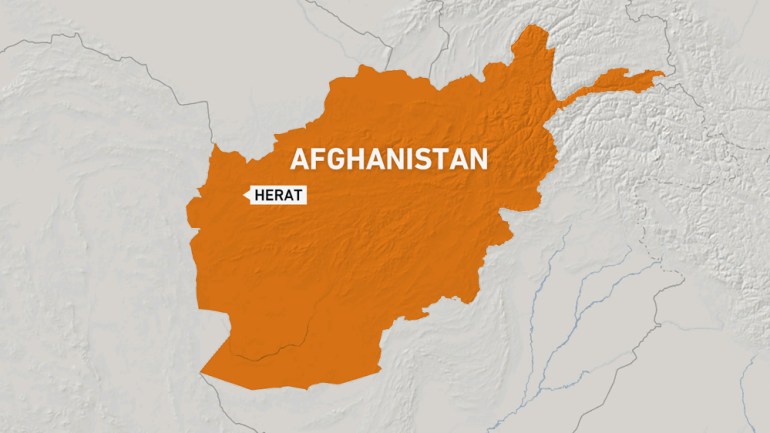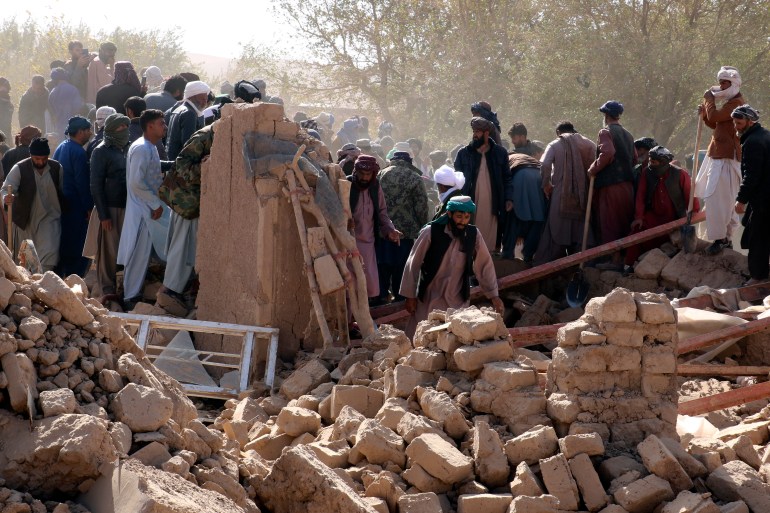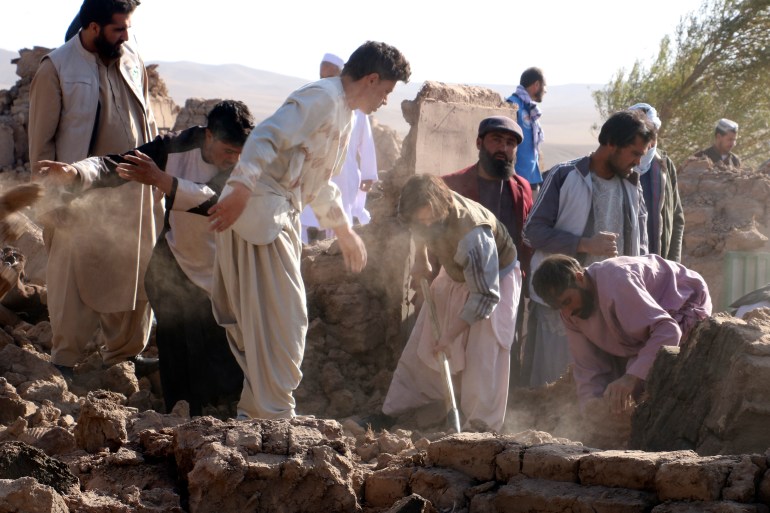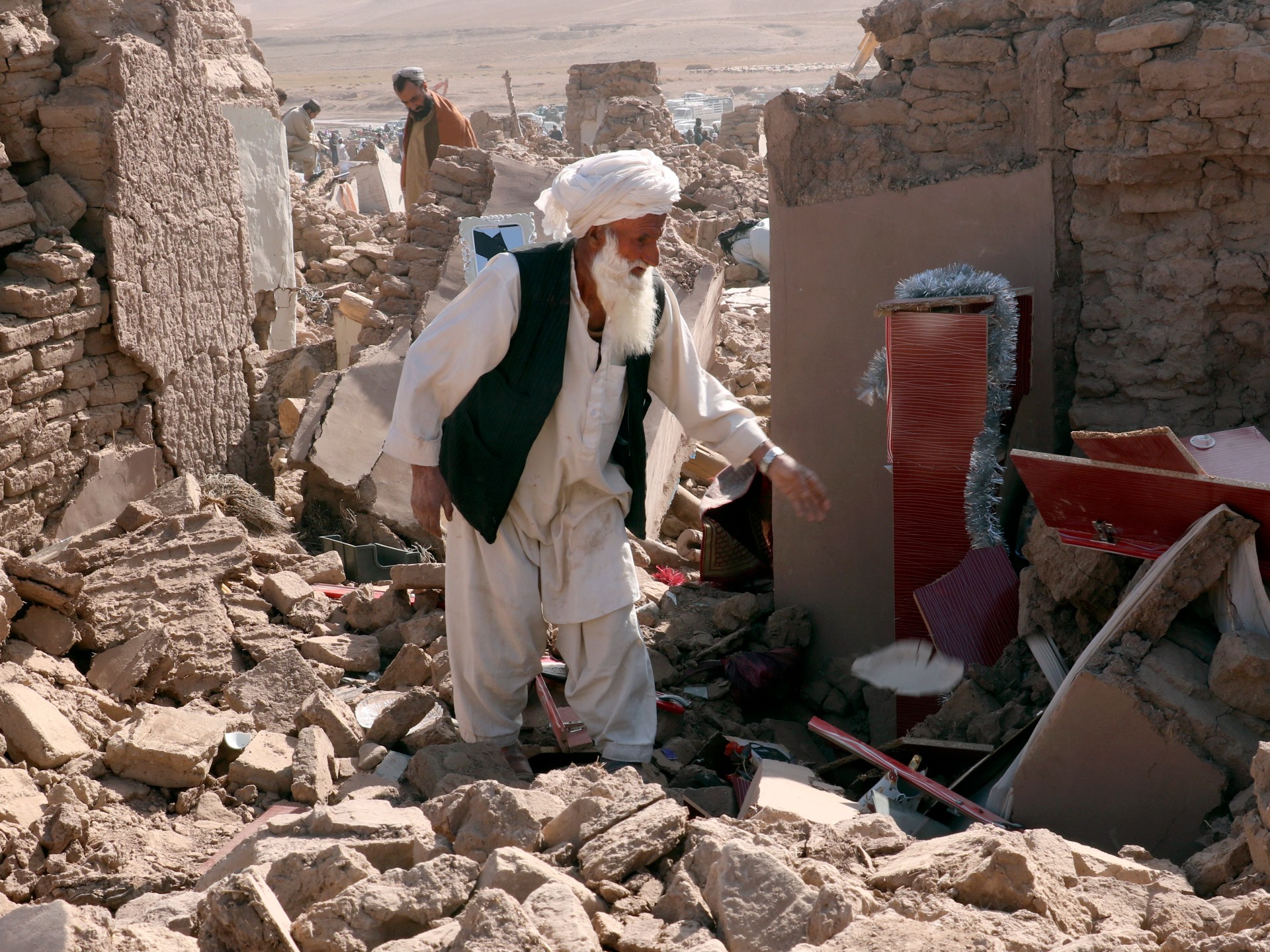People in quake-hit Afghanistan use shovels, bare hands to pull out victims | Earthquakes News
Volunteers and rescue workers in quake-hit Afghanistan say they are forced to use shovels and even their bare hands to look for victims and survivors.
“There is no modern equipment nor trained search and rescue teams. This could result in a rise in casualties. If we don’t urgently receive advanced and trained rescue teams in the area soon, we will see an increase in the loss of lives that could have been avoided,” Sabir, a rescue worker in western Afghanistan’s Herat province, told Al Jazeera on Sunday.
He urged the international community to send rescue teams to the impoverished South Asian country, which lacks a robust disaster management agency and other resources since the Taliban regained power two years ago.
According to official figures, at least 2,053 people have been killed and nearly 10,000 injured after the magnitude 6.3 quake and several aftershocks hit the aid-dependent country on Saturday morning.
Sabir said the actual toll could be higher.
“We still don’t know about casualties because most people – dead or alive – are still buried under the debris,” he said, adding that it was hard to put a number on how many are still trapped.

Sabir said he was jolted awake when the powerful earthquake shook the ground. “It was unlike anything I had experienced before,” the 30-year-old told Al Jazeera by telephone
“It was a massive vibration, and I felt fear, anxiety and panic altogether,” he said.
Shortly after ensuring his family’s safety, Sabir, an aid worker with a local NGO, reported to work to help with the emergency response.
It was only after arriving in the Zenda Jan district of Herat, the quake’s epicentre, that he witnessed the extent of the impact of the tragedy. At least 13 villages in this district alone were deeply affected, he said.
“The scenes I witnessed are some of the most horrible things I have seen in my life,” Sabir told Al Jazeera, adding that villages with more than 400 households had been turned into ruins.
“At least nine villages in the district had been completely razed with no structures left standing,” he said. “There were children, women and the elderly among the bodies that were being pulled out.”

Lack of resources, rescuers
Sabir said there was an urgent need for food, water and shelter, especially for women and children who lost their homes.
“There is a shortage of water and food, and families, women and children, don’t have any shelter or tents to protect them from the weather and cold night,” he said, adding that volunteers brought in some resources, but they were not sufficient.
“Lots of volunteers from Herat city travelled to these sites, which was very useful and helped save lives, but there is a lot more that is still needed,” he said.
Sabir said apart from food, water and tents, the survivors also need medical and psychosocial support.
“One requirement in particular is the care of many children who were orphaned or are separated from their families. They need psychosocial support, someone to take care of them,” he said.
However, a significant reduction in foreign funds since the Taliban takeover in 2021 has left aid-dependent Afghanistan vulnerable to humanitarian crises. Additionally, there is also a dearth of skilled workers because many Afghans with expertise fled the country after the Taliban regained power.
Local officials and residents said they are struggling to conduct search and rescue operations.
“The crisis is already out of the capacity of the local authorities in Herat. It needs a more concentrated response, and there is a need for modern rescue equipment, which we don’t have,” said Abdul Baset Rahmani, a disaster management expert who has joined the volunteers in Herat.

Despite mounting challenges, rescuers and volunteers remain hopeful of saving more lives.
“This village has a population of nearly 2,000. We only found 40 people. The rest are still buried. Many of them are alive,” Sabir said as he helped the rescue work in Herat’s Naib Rafi village.
He said he walked past each pile of rubble that used to be a house and called out to anyone who might reply.
“I kept calling, ‘Is anyone there?’ and then we heard a voice. ‘Yes, I am alive,’” he said. Sabir and his colleagues quickly helped dig a man out alive – the sole survivor in his family.
“It was the most distressing moment of my life,” Sabir said.




